Some of the most commonly used adhesive joint strength tests fall under the general category of lap shear tests. Such samples are relatively easy to construct and closely resemble the geometry of many practical joints. The stress distribution for lap joints is far from uniform, but again the test results are commonly reported as load at failure divided by the area of overlap. The maximum stress generally differs markedly from this average value. More important, perhaps, failure of the joint is, in all likelihood, more closely related to the value of the induced cleavage stresses at the bond termini
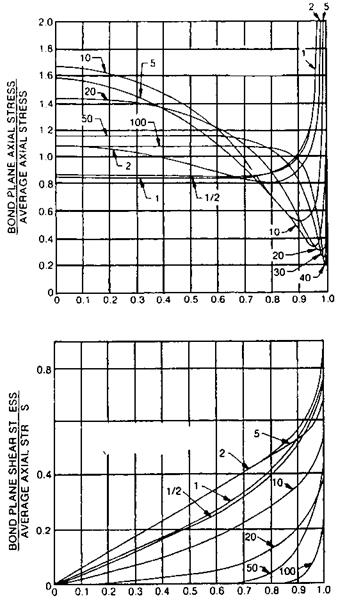 RADIUS
RADIUS
Figure 3 Axial and shear stress distributions in butt joints, v = 0.49. Djh is diameter/thickness ratio.
than to the shear stresses. Figure 4 shows several of the commonly used lap shear specimen geometries (i. e., those corresponding to ASTM D-1002, D-3165, and D-3528).
Because of flow of adhesive out the sides and edges as well as other difficulties in preparing and aligning the parts when preparing individual lap specimens, samples are frequently prepared from two relatively large sheets and the specimens are ‘‘saw’’ cut from the resulting laminated sheet. This is illustrated in Figs. 4b and 5 and described in ASTM D-3165. It has long been recognized that lap shear specimens such as those represented in
|
Figure 4 Standard lap shear geometries: (a) simple lap joint test, ASTM D-1002; (b) laminated lap shear joint test, ASTM D-3165; (c) double lap joint test, ASTM D-3528. |
Fig. 4a and b must distort, so that the forces applied to the sample fall on the same line of action. This induces cleavage stresses in the adhesive near the bond termini. Double lap shear specimens described in ASTM D-3528 are proposed as a means of alleviating this problem (see Fig. 4c). However, based on our computer analysis and experimental studies, we feel that failure of double lap joints is still dominated by cleavage stresses [5].
As was the case for tensile specimens, the stress distribution in lap joints is intricately related to the details of the specimen geometry [2,6-16]. Such factors as amount of overlap, adhesive thickness, adherend thickness, relative stiffness (moduli) of the adhesive and adherend, and other factors critically influence the stress distribution. The maximum
|
Figure 5 Large panel used to manufacture ASTM D-3165 specimens. The panel is cut into strips for testing. |
|
Figure 6 Log stress plot for the lap shear test. |
stresses occur near the bond termini. Figure 6 shows the results of an elastic finite element analysis for the stresses in this region for a specimen of ASTM D-1002 geometry. Note that the tensile stresses are consistently higher than the shear. This fact, coupled with the fact that adhesives have typically been shown to be more susceptible to cleavage than shear failure, is consistent with the observation that cleavage rather than shear stresses usually dominate lap joint fracture.
A reason that one should be very cautious in attempting to use average shear stress criteria to predict failure of lap joints is illustrated in Fig. 7. This figure shows the force required to cause failure in ASTM D-1002 lap joint specimens using steel adherends of differing thicknesses. Note that for a given applied load, the ‘‘average shear stress’’ for all adherend thickness would be the same (i. e., the applied force divided by the area of
|
Figure 7 Force required to cause failure versus adherend thickness for ASTM D-1002 specimens using adherends of differing thicknesses. |
overlap). If there was a one-to-one correspondence between this stress and failure, one would expect failure load to be independent of the adherend thickness. It is obvious from this figure that this is not the case. Similar results were obtained by Guess et al. [8]. The trends shown in Fig. 7 can be quantitatively explained using numerical methods and fracture mechanics [2,8]. Fracture mechanics is discussed later in the chapter.
A further indication of the popularity of lap shear tests is the number and variety of such tests that have been standardized as illustrated in the following examples. ASTM: D-905, Standard Test Method for Strength Properties of Adhesive Bonds in Shear by Compression Loading, describes test geometry, a shearing tool, and procedures for testing wood and similar materials. ASTM D-906, Standard Test Method for Strength Properties of Adhesive in Plywood Type Construction in Shear by Tension Loading, provides specifications for specimen shape and dimensions, grips and jaws, and testing procedures for testing plywood materials. ASTM D-2339 is a very similar test for plywood construction materials. ASTM D-3930 describes several adhesive tests, including a block shear test for wood-based home construction materials. D-3931 is similar to D-905, but for testing gapfilling adhesives; ASTM D-3163 and D-3l64 are similar to D-1002, except for use with plastics and plastic to metal instead of metal to metal. ASTM D-3983, Standard Test Method for Measuring Strength and Shear Modulus of Non Rigid Adhesives by a Thick Adherend Tensile Lap Specimen, describes a dual-transducer slip gauge, specimen geometry, and methods for determination of adhesive joint strength and modulus. ASTM D-4027 has a similar purpose but uses a more complex ‘‘modified-rail test’’ apparatus. ASTM D-4501 describes a shear tool and holding block arrangement for use in testing the force required to remove a square block of material bonded to a larger plate. D-4501 describes a shear test in which the specimen is a block bonded to a larger plate. D-4562 describes a shear test in which the specimen is a pin bonded inside a collar. The test uses a press to force the pin through the collar, which rests on a support cylinder. The test results in this case are the force required to initiate failure divided by the bonded area between the pin and collar. ASTM E-229 also uses a pin-in-collar type of specimen except that here torsional loading causes the failure. D-4896, Standard Guide for Use of Adhesive-Bonded
Single Lap-Joint Specimen Test Results, is intended to give insight into the interpretation of the results from all the lap shear tests. At other points in ASTM Vol. 15.06 and in this chapter, reference is made to other standard tests that use ‘‘shear-type specimens’’ to explore moisture, and other environmental, fatigue, and creep effects in adhesive joints.
 6 июля, 2015
6 июля, 2015  Malyar
Malyar 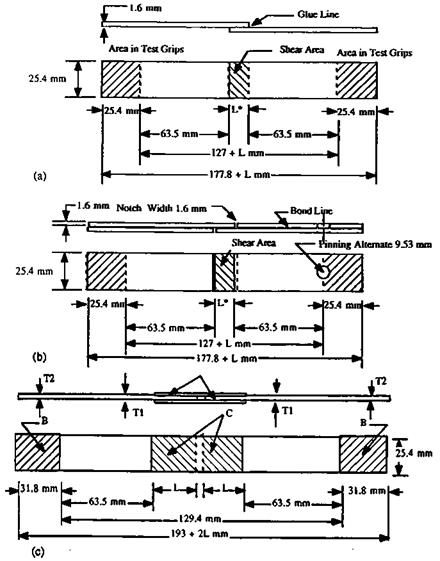
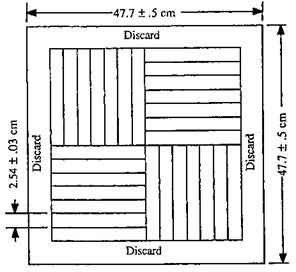
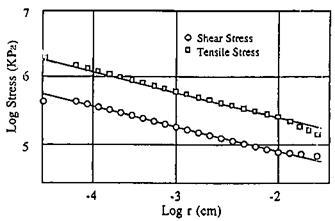
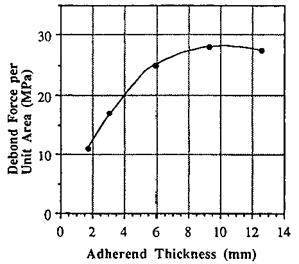
 Опубликовано в рубрике
Опубликовано в рубрике 